Mini Transat Leg 1 AAR (Part 1)
Breaking down the first two days of the race
Terminal Leave starts on pin third of the line or left side (Photo: Vincent Olivaud)
The start to the 2023 Mini Transat was originally planned for 24 September. However, due to severe weather approaching the Bay of Biscay, it was postponed to the following day. As the forecast updated, and with the addition of a waypoint to force the fleet towards the southern part of the bay, the race was fortunately able to proceed.
On 25 September, the race was scheduled to start at 1330 local time (1130 UTC). With 90 Minis in the fleet there was a long starting line set. All of the series and prototype (protos) start at the same time, but are scored separately. This certainly factors into the game plan when trying to get off the line.
Watch the video highlights from the first two days of this race!
While in sequence, the race committee put us into a brief postponement. This really helped me for a few reasons. First, when we went into sequence I was farther down the line on the right side (towards committee boat) and wanted to sail up to the pin (left side). With the large wind shift to the left, it was taking longer than planned to get to the favored end of the starting line.
Additionally, the Classe Mini usually prohibits the use of bow sprits and struts deployed before crossing the starting line for safety reasons. However, the rule was amended so boats could have them deployed only if they were to immediately use that sail at the start. This amendment to the rule was supposed to prevent boats from gaining an advantage with having their bow sprit deployed throughout the starting sequence and had to do with the spirit of the rule.
The use of a bow sprit was a big decision each skipper had to make before going into sequence, because it takes time to set up and distracts you while maneuvering within the fleet. The starts are highly competitive and the Minis get really close to each other throughout the starting sequence. Initially I did not have the bowsprit deployed because it was borderline between upwind and close reach start. With a wind shift to the left and a brief 5 minute postponement, I changed my plan and deployed the bowsprit with my code 0 hosted, but furled and ready to be used. You can see Terminal Leave and I lining up for the start with the Code 0 still furled.
Terminal Leave a few boat lengths below the line, getting ready for the start. 1038 won the start but was almost over early. (Photo: Qaptur)
The starting sequence in the Mini fleet is slightly different than I have ever seen in other inshore and offshore races. There is a warning signal at 8 minutes, a 4 minute preparatory signal, 1 minute signal (preparatory flag down), and start signal.
Starting sequence chart from the Mini Transat Sailing Instructions
With the starting line set for all 90 Minis to cross, the wind was pretty far left with the pin end (left side) favored. This meant most of the boats would be starting on port tack with code 0s for a close reach off the line. This was challenging because just one starboard tack boat with the right of way could really mess up your plan. However, luckily the wind became so far left, anyone on starboard tack would likely not have been able to even cross the starting line with that wind direction.
Halfway into the starting sequence, I set myself up below the line on starboard tack, in the middle section and headed towards the pin end. At about the three minutes, I tacked onto port below the pin side and started reaching towards the line. There were many boats above the layline to the pin that had to wait for the boats to fall off to get their spot on the line. Fortunately, I was below layline to the pin so that I would not get forced out and was aiming for a pin third start. No need to win the pin, but was looking for clear air and speed off the line.
Offshore Social Club filmed the start and make sure to check it out here (link loads video in the final moments of the starting sequence): https://www.youtube.com/live/cccsfoE0hXM?si=usuTpjVsJ34H-Z5t&t=4658
Terminal Leave just forward and leeward of 1081 who won the first leg (Photo: Qaptur)
As the starting gun fired, the fleet of 90 Minis were off on this 1,350 nm leg of the Mini Transat! Terminal Leave and I were just a few boat lengths below the line with the code 0 deployed and going fast off the line. This was a great way to start the race! In the video you can see there was some serious line sag with the fleet being concerned about crossing the line too early. While I initially had clear air, I lost it for a few moments when the proto 1081 to weather passed me. This boat was fast and would go on to win this first leg.
Unfortunately, I was unable to match a similar angle and speed to the boats around me. Going into this race, I knew my boat’s design struggled on the closest of reaches where you are almost sailing upwind with the Code 0. The boats around me quickly sailed by and ahead into the distance. To say I was frustrated is an understatement. I spent three years preparing for this race just to be in the back of the pack within about an hour after the start. I was angry and disappointed in myself. However, not all is lost. This is a perfect example of where I should have sailed my boat to the angles it needs to keep up speed, compared to trying to match the angle of other minis that have slightly different designs. I could have either turned down a few degrees to continue reaching or furled the Code 0 and sailed closer to the wind (maybe just cracked off a bit). Yet, it is still difficult to accept that reality when in the middle of the fleet at the start.
Terminal Leave on a close reach shortly after the start. I had difficulty matching angles and speed with the fleet. (Photo: Vincent Olivaud)
The first race within a race
With an ESE wind, our first leg was 215 nm to the southwest towards a waypoint that we were required to leave to starboard. It was about 30 nm north of Gijón, Spain and two-thirds the way out of the Bay of Biscay. This was the waypoint designed to keep the fleet away from the more severe weather towards the northern region of the bay.
Over the next few hours, as the wind clocked right slightly it turned into an upwind beat, still on port tack with about 6-8 kts of wind.
At dusk, the wind once again shifted to ENE and increased to 9-11 kts. This allowed me to hoist my largest spinnaker (A2) and have better speed towards the first waypoint.
With the wind shifting so much, and different from the forecasted models, my plan was to aim for the rhumb line, or the shortest distance from the start. Throughout the night I shifted back to reaching with the Code 0
ECMWF Model showing light and shifty winds the first night. The GFS model indicated even lighter wind while the AROME model over forecasted the wind speed
Day 2 / 26 Sept (Bay of Biscay)
As the wind continued to shift, I began beating upwind in the early morning. I really enjoy the first morning at sea. There is so much that goes into preparing for a race like this and the day of departure is mixed with excitement, stress, and pressure. However, once I get through the first night successfully, I know the boat and myself can handle many more sun rises. It is a great confidence boost mixed with a feeling of accomplishment for getting out into the ocean in a solo race.
At about 0700 (all times are now in UTC) I was once again reaching with the code 0 in about 10-12 kts of wind coming from the NW. Everything was going well until I was down below and heard a bang and the boat leveled out quickly. The weather strut bar, which supports the line that holds the spinnaker pole in place, bent 90 degrees when the boat loaded up in a puff of wind. This was frustrating because this strut was brand new and it should not have failed that quickly. I had this happen once before my first season, and learned how to prevent the strut from bending by angling the spinnaker pole to weather. However, even though I used this technique, the strut still broke. I was prepared for this and quickly dropped the Code 0, replaced the strut with an older one, and hoisted the sail to keep going.
Late in the afternoon and into the early evening the wind softened and completely died. One of the support boats motored by and took a few pictures while I was eating my dinner. There was not a breath of wind and all I could do was wait for it to fill back in.
Thank you to the crew of Namiko for these two photos
The evening of day two we experienced another wind shift, so I hoisted the A2 spinnaker. With clear skies and a rising full moon, it was turning into an awesome evening. As the wind increased to the high teens, Terminal Leave was surfing down waves. With the wind speed continuing to climb into the mid-twenties, I changed to the slightly smaller A3 spinnaker and reefed the main. The boat speed was consistently over 10 kts and we were knocking out miles that evening. Knowing this wind direction would not last forever, sleep was not going to happen. I stayed up all night hand steering most of the time to maximize the boat speed, surf waves, and try to prevent the boat from wiping out. While the auto pilot is great, it had difficulty with the boat being powered up and the wave direction that night.
Make sure to check out the AAR Part 2 where I sail through a front and experienced one of the windiest days yet on Terminal Leave!
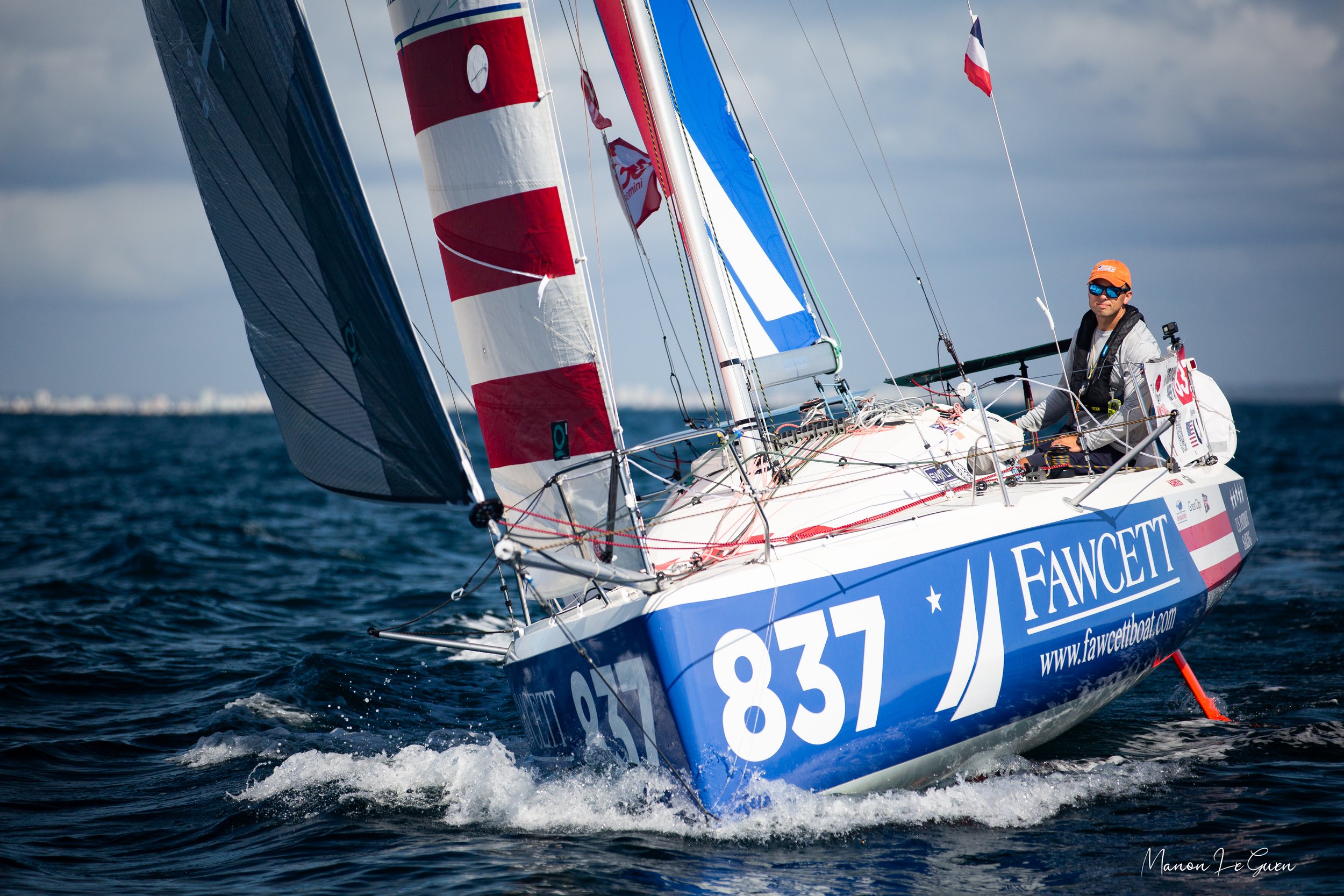
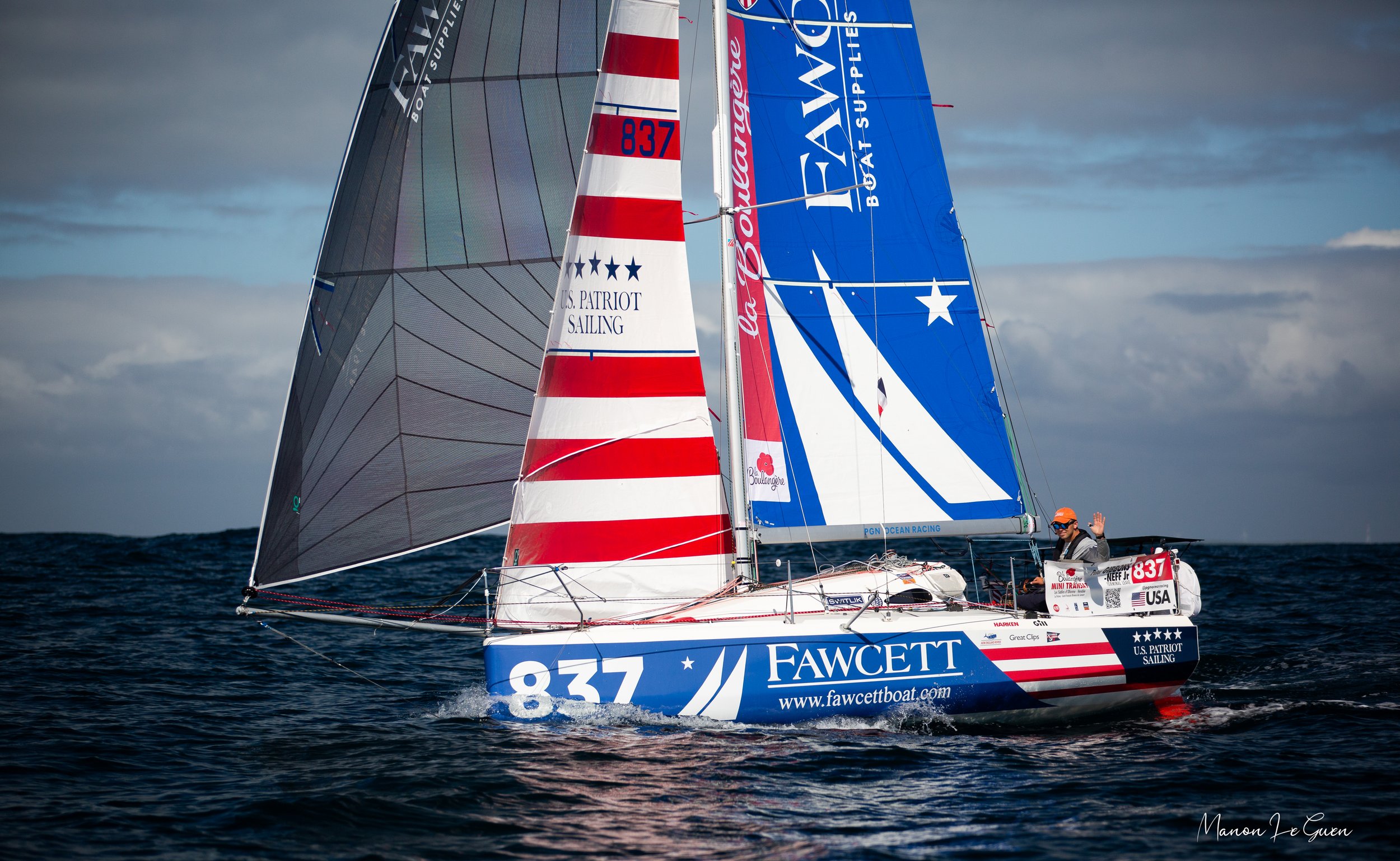
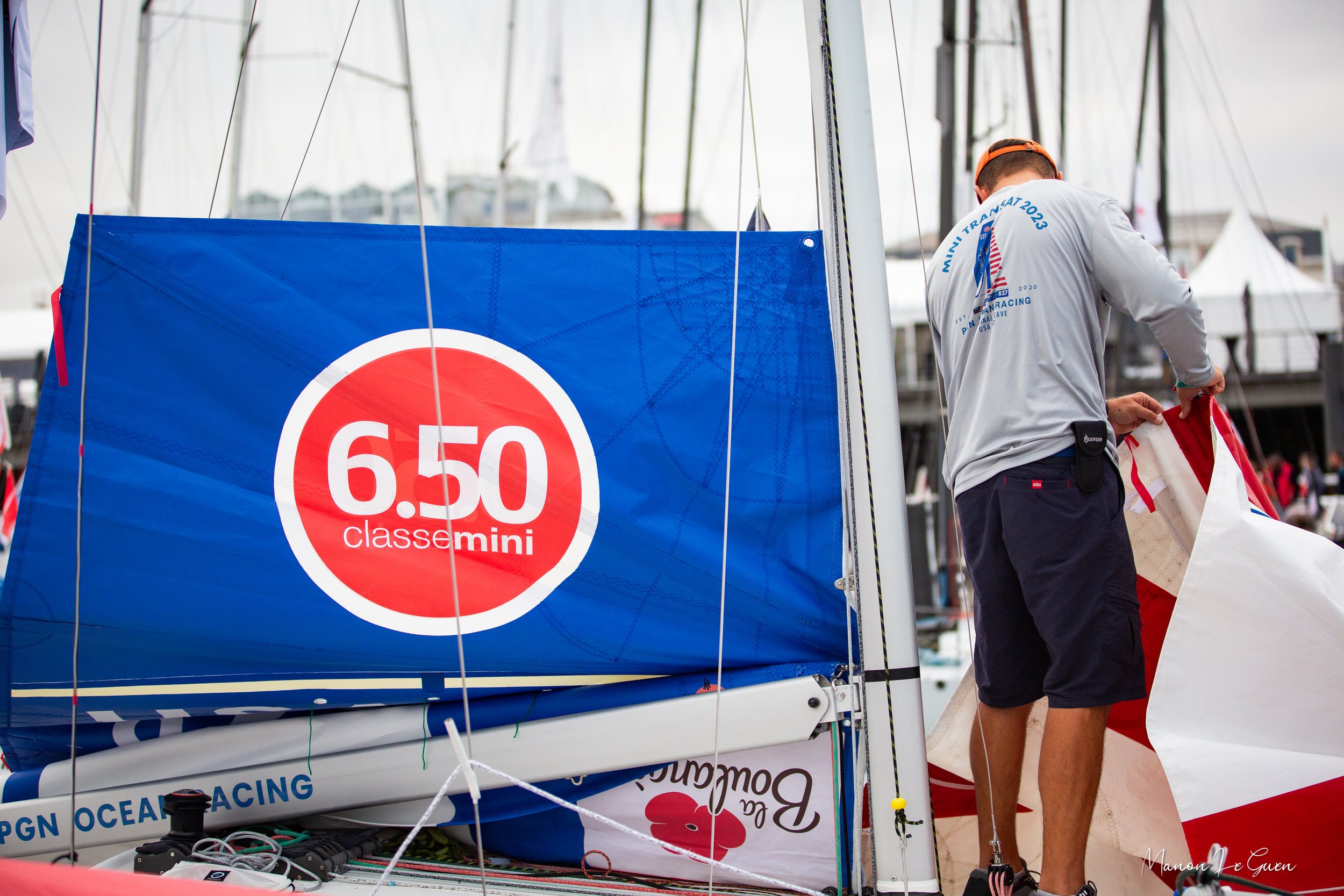
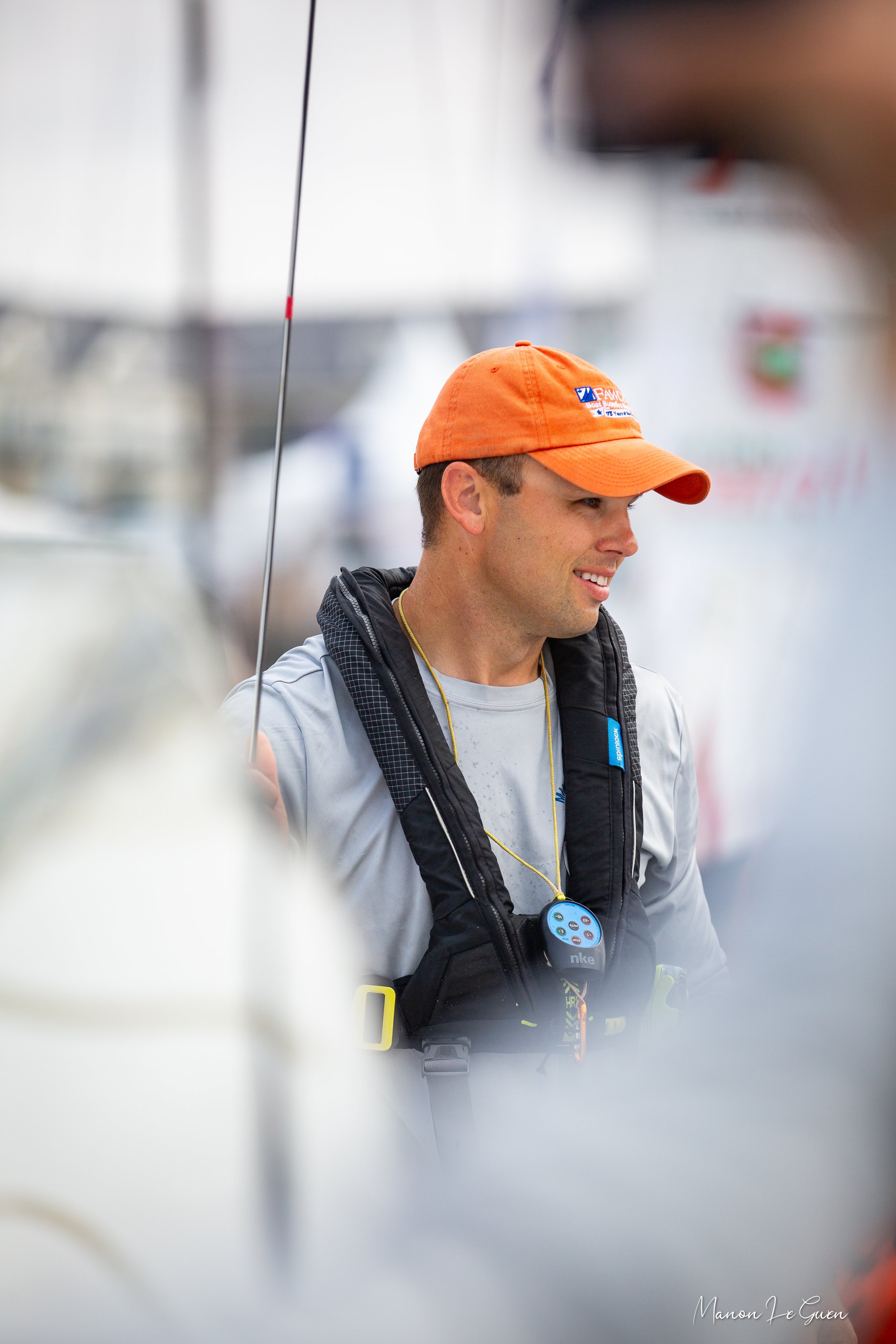
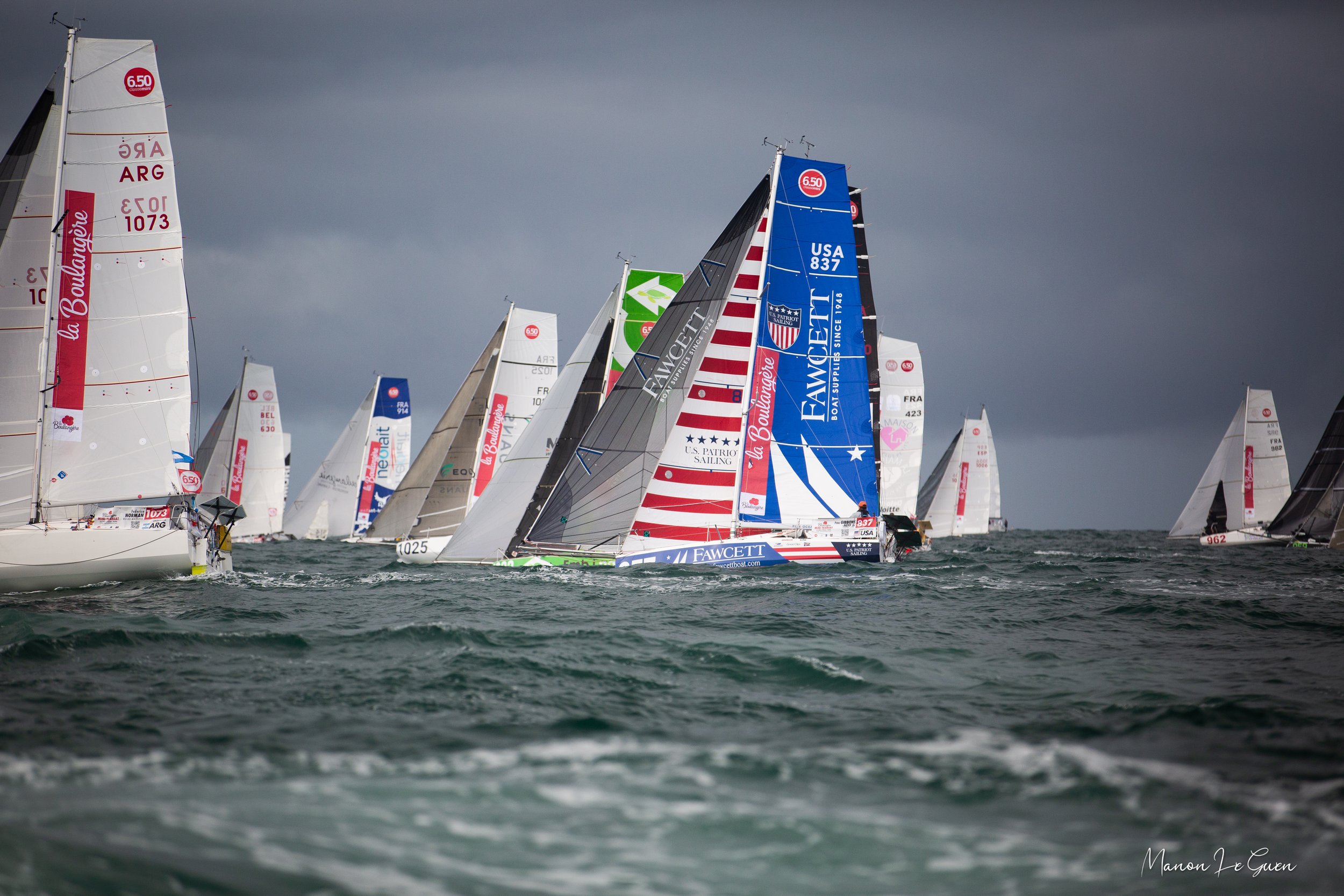
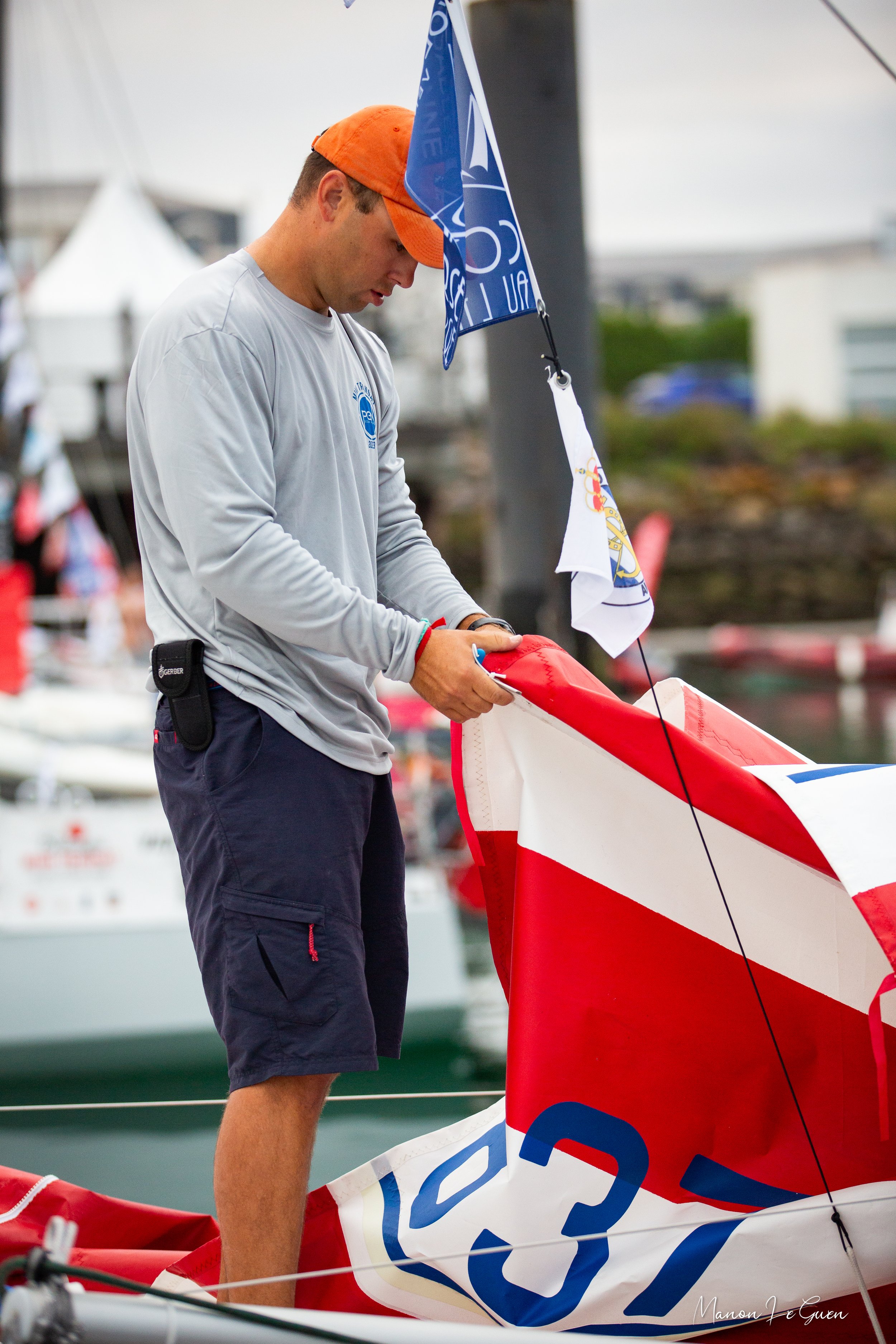
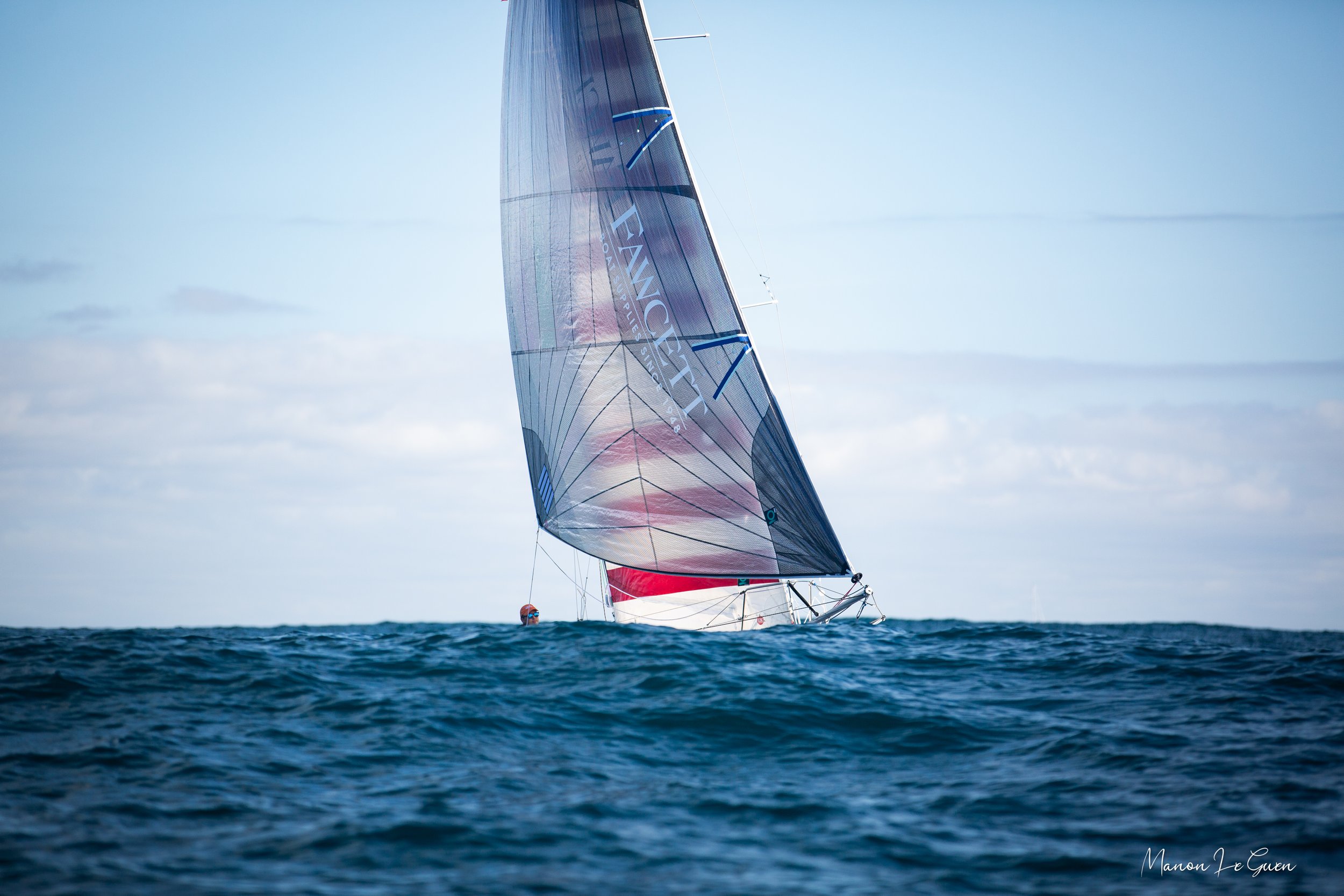
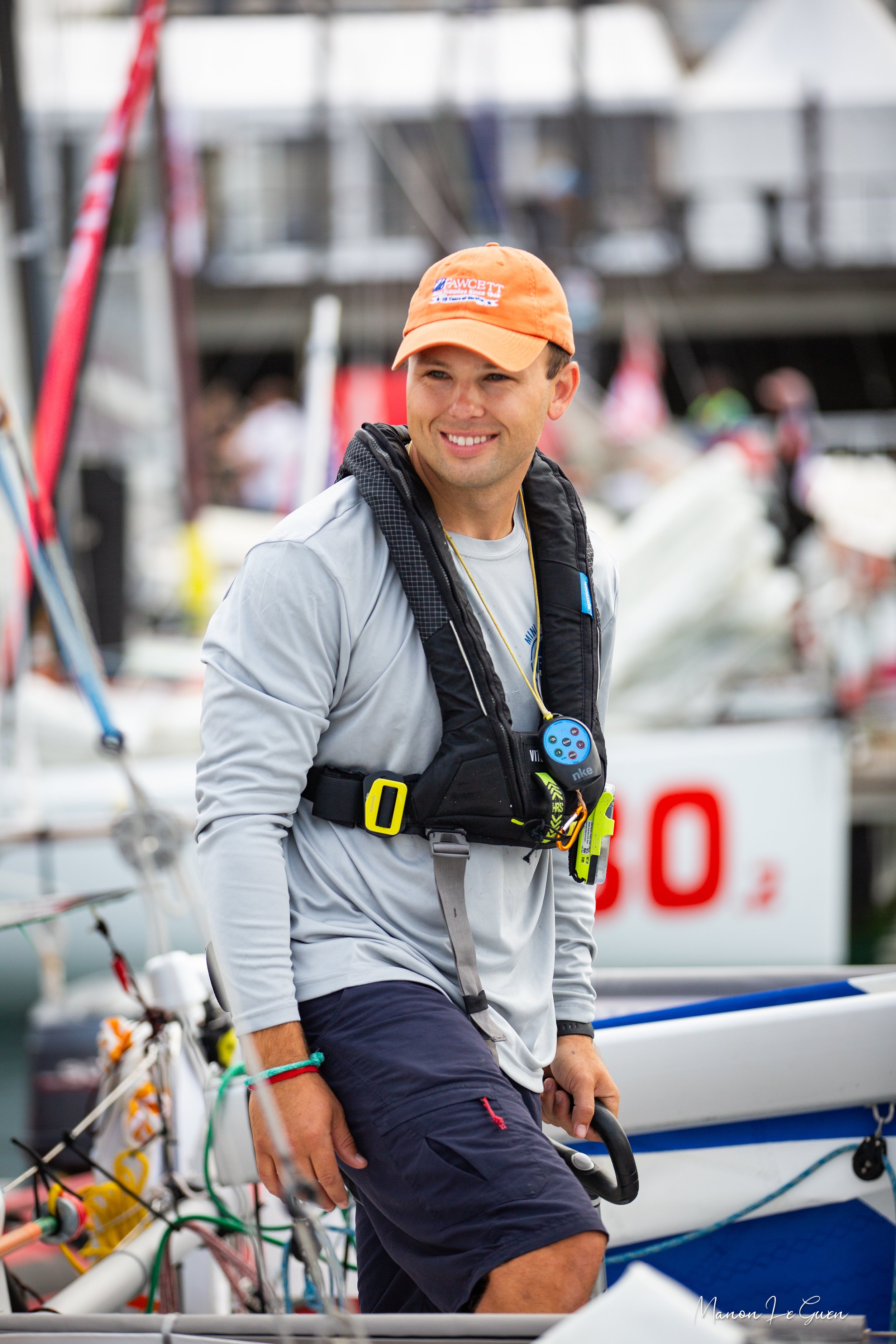
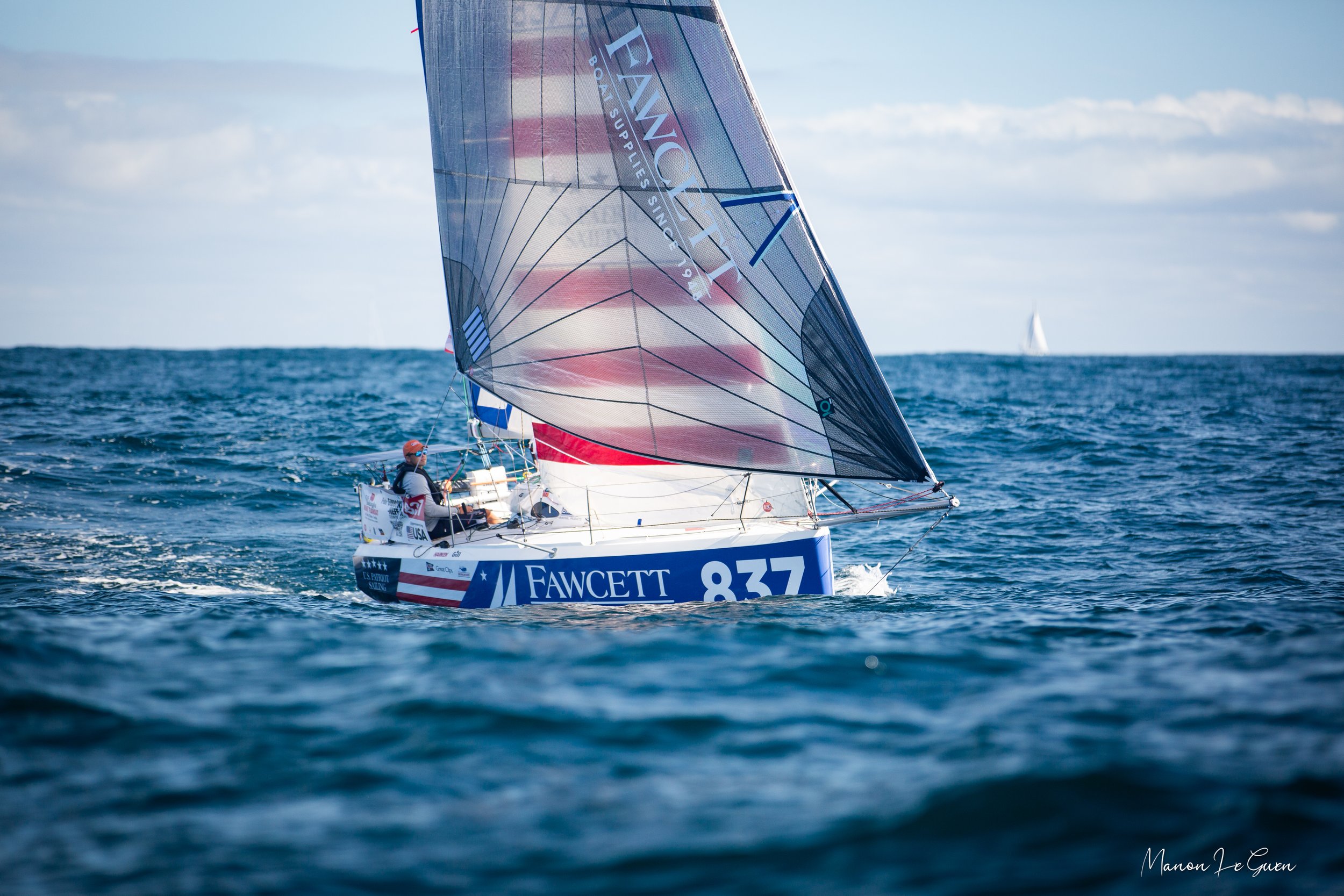
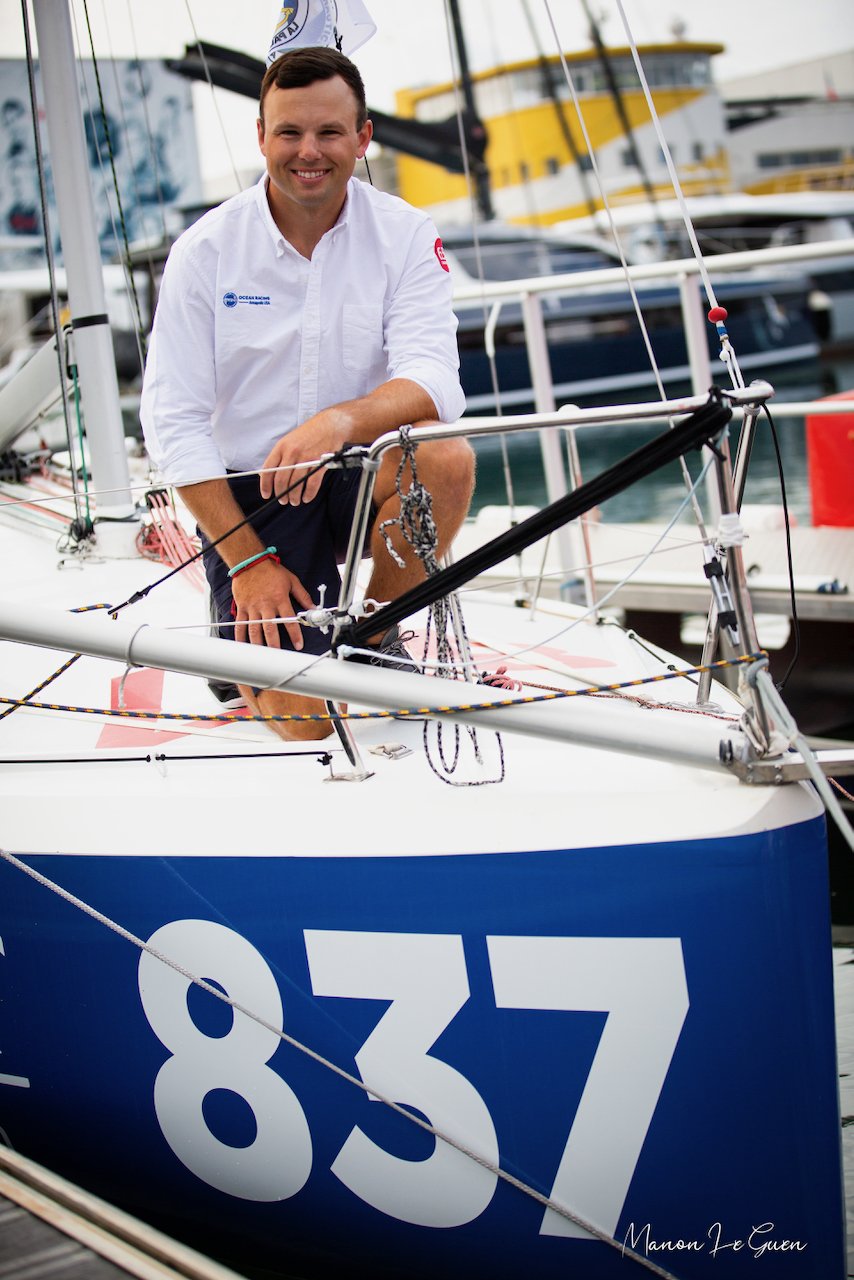
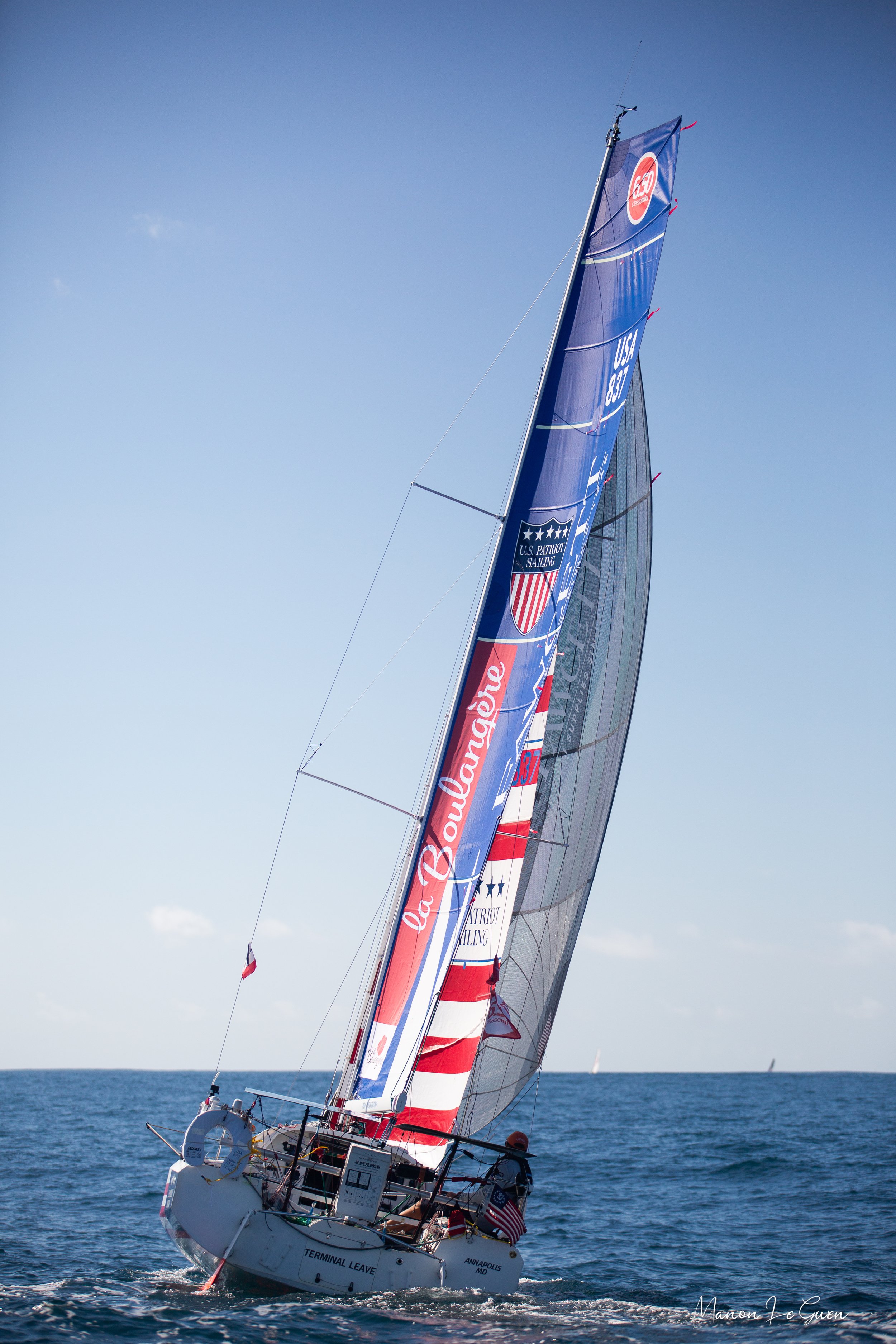
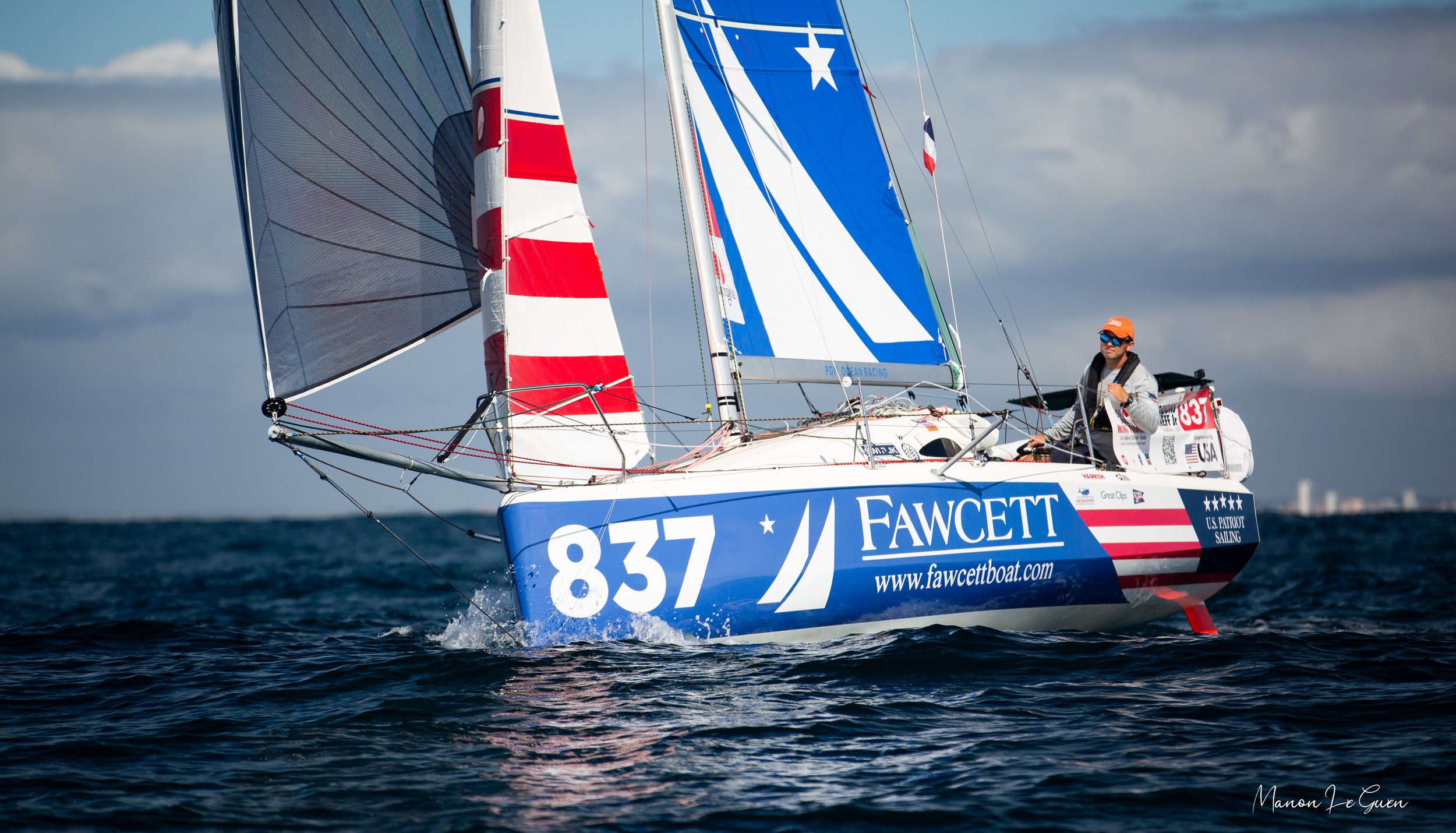
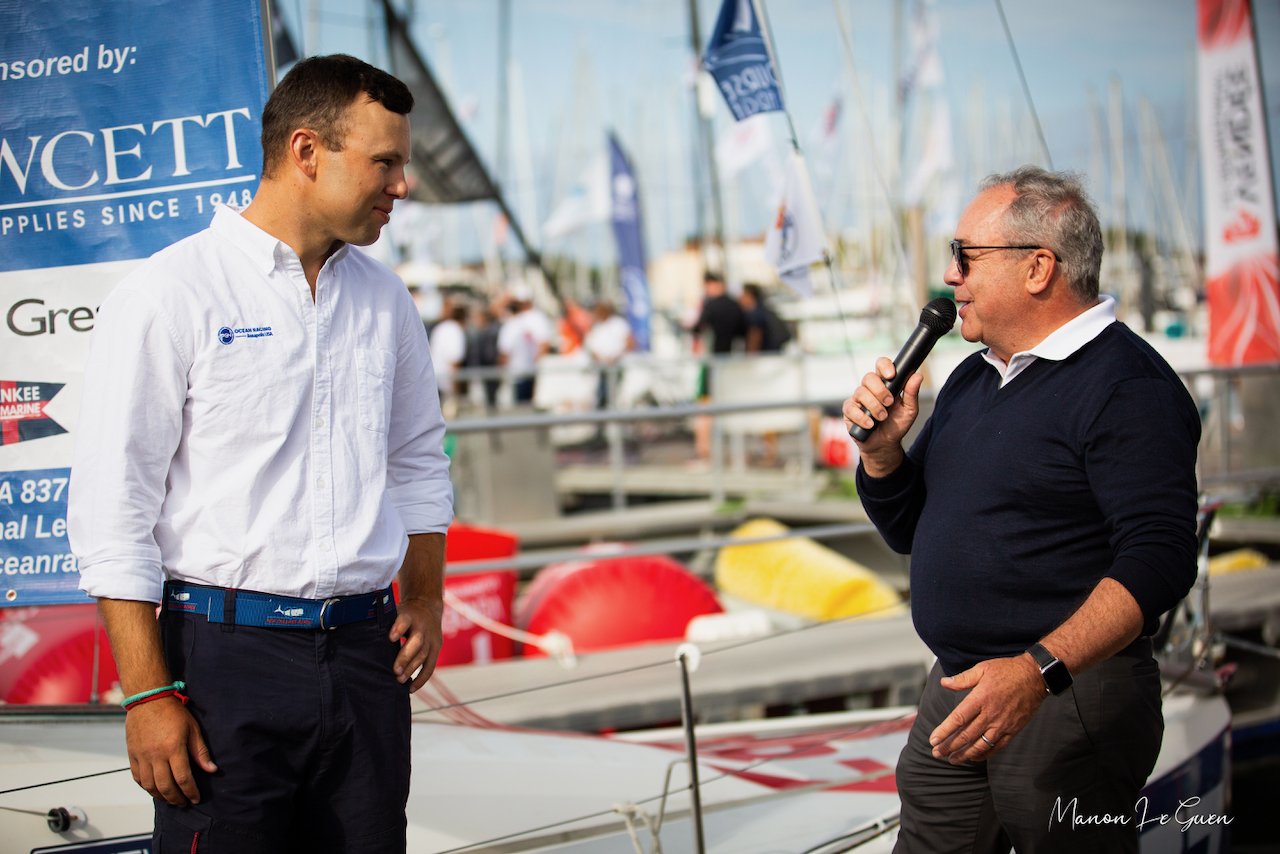
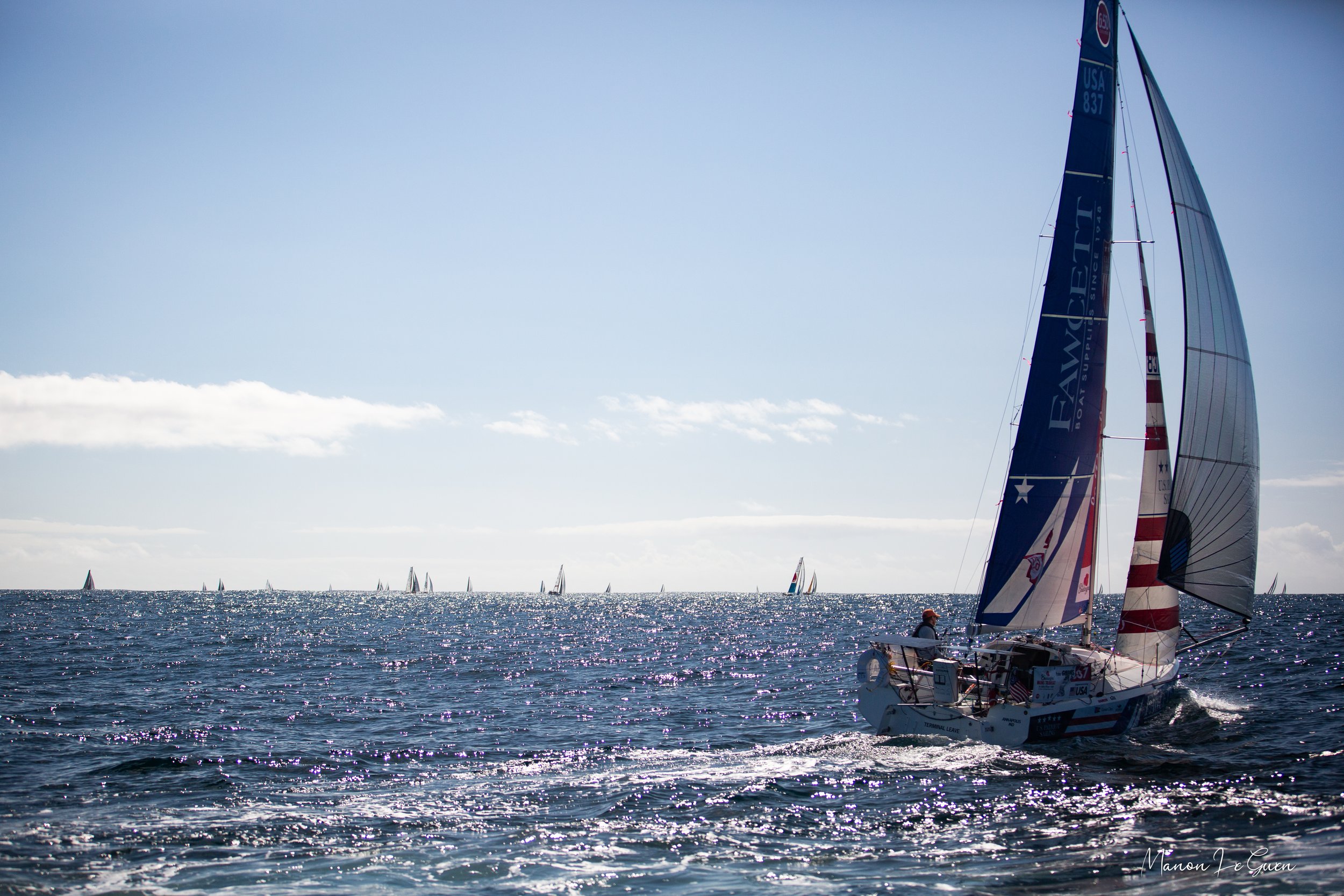
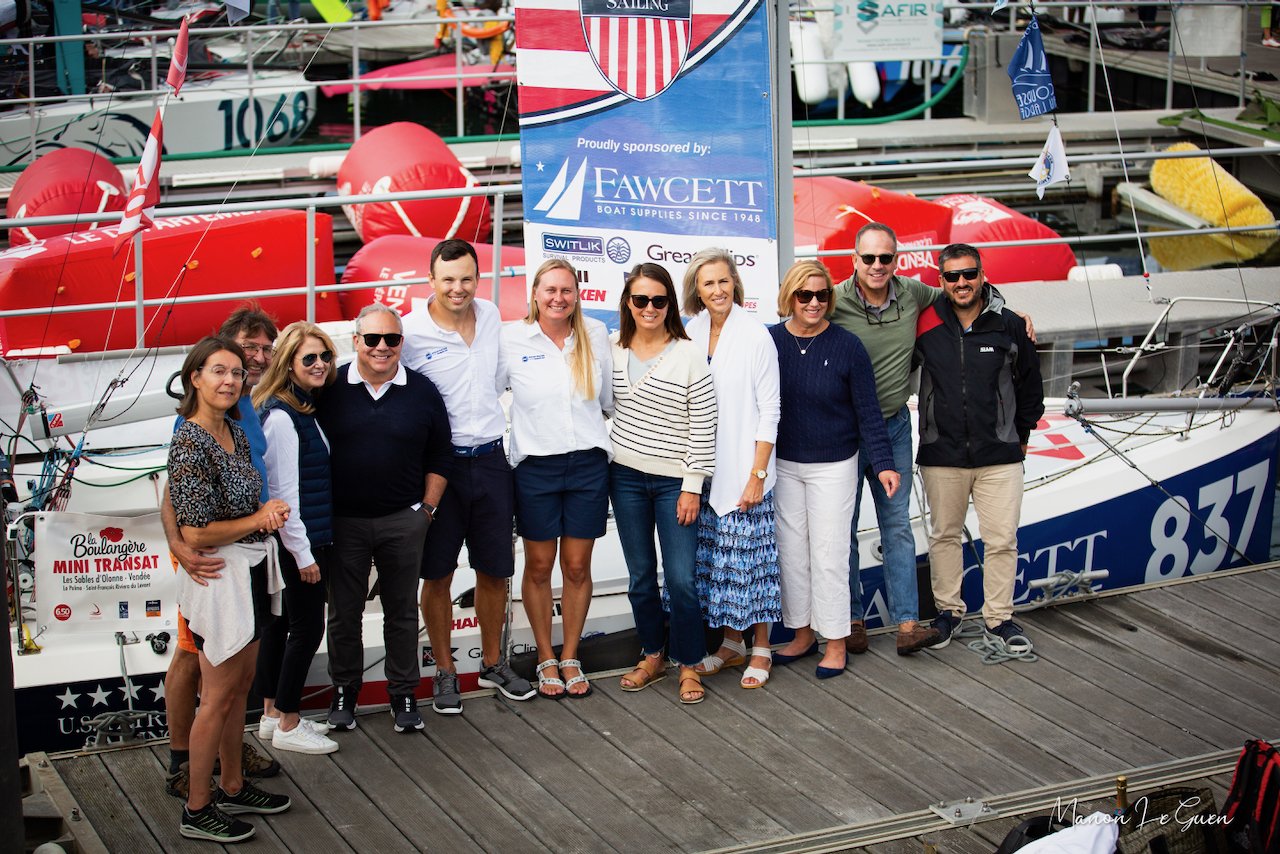
All images by Manon Le Guen from the departure from the pontoon and the start of the race.
Thank you to everyone who is following along and supporting this mission! We are grateful for the community that has rallied behind this campaign and I am proud to represent the USA and U.S. Patriot Sailing in this international race. We have reached the 50% goal for fundraising for the campaign but your donations to support this campaign are still needed, with changes in flights, logistics costs, and additional unplanned expenses that have added up quickly. Any support is greatly appreciated! Please click the Donate button below to support!
While we have some awesome sponsors, we still need your support to finish this mission. Every donation helps, THANK YOU!
If you are able to help, please consider donating through U.S. Patriot Sailing for a tax-deductible donation or through our GoFundMe page.
Learn More Here: www.pgnoceanracing.com/donate
I am racing in the Mini Transat as an ambassador for U.S. Patriot Sailing to raise awareness for this incredible non-profit team.
U.S. Patriot Sailing
Supports the veteran community navigate the hardships of transition to civilian life, rehabilitation after injury, and the complex life challenges associated with combat deployments. The organization accomplishes its mission by welcoming veterans back onto a winning team, provides camaraderie, a sense of mission accomplishment, and new dynamic experiences
Are you following PGN Ocean Racing on Facebook, Instagram, and YouTube Yet?









